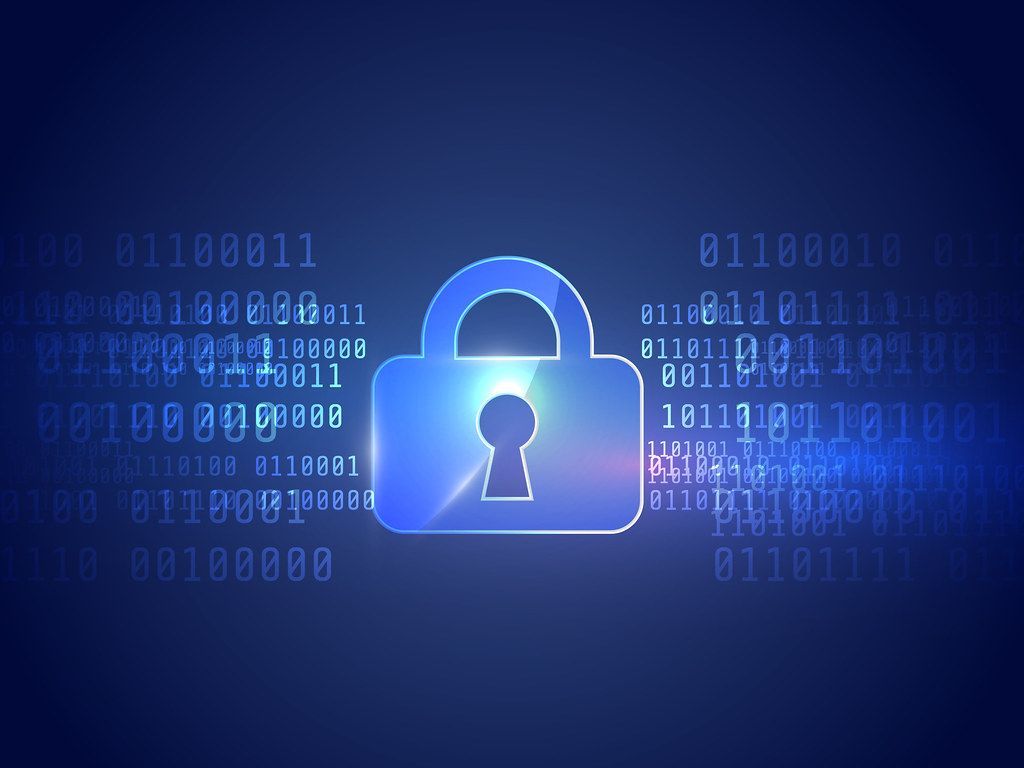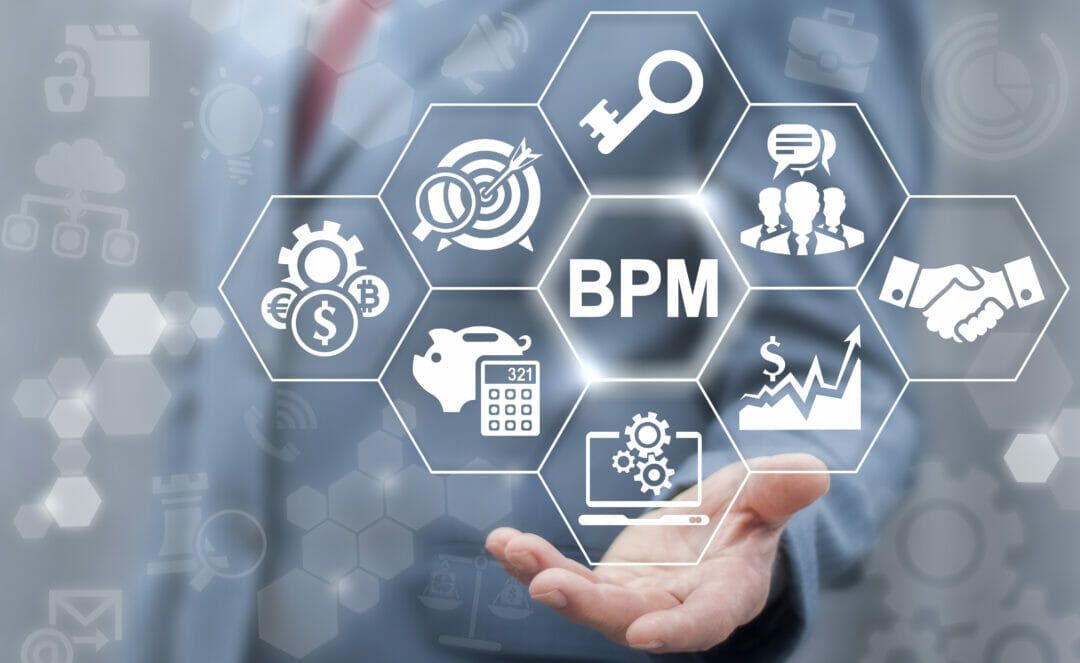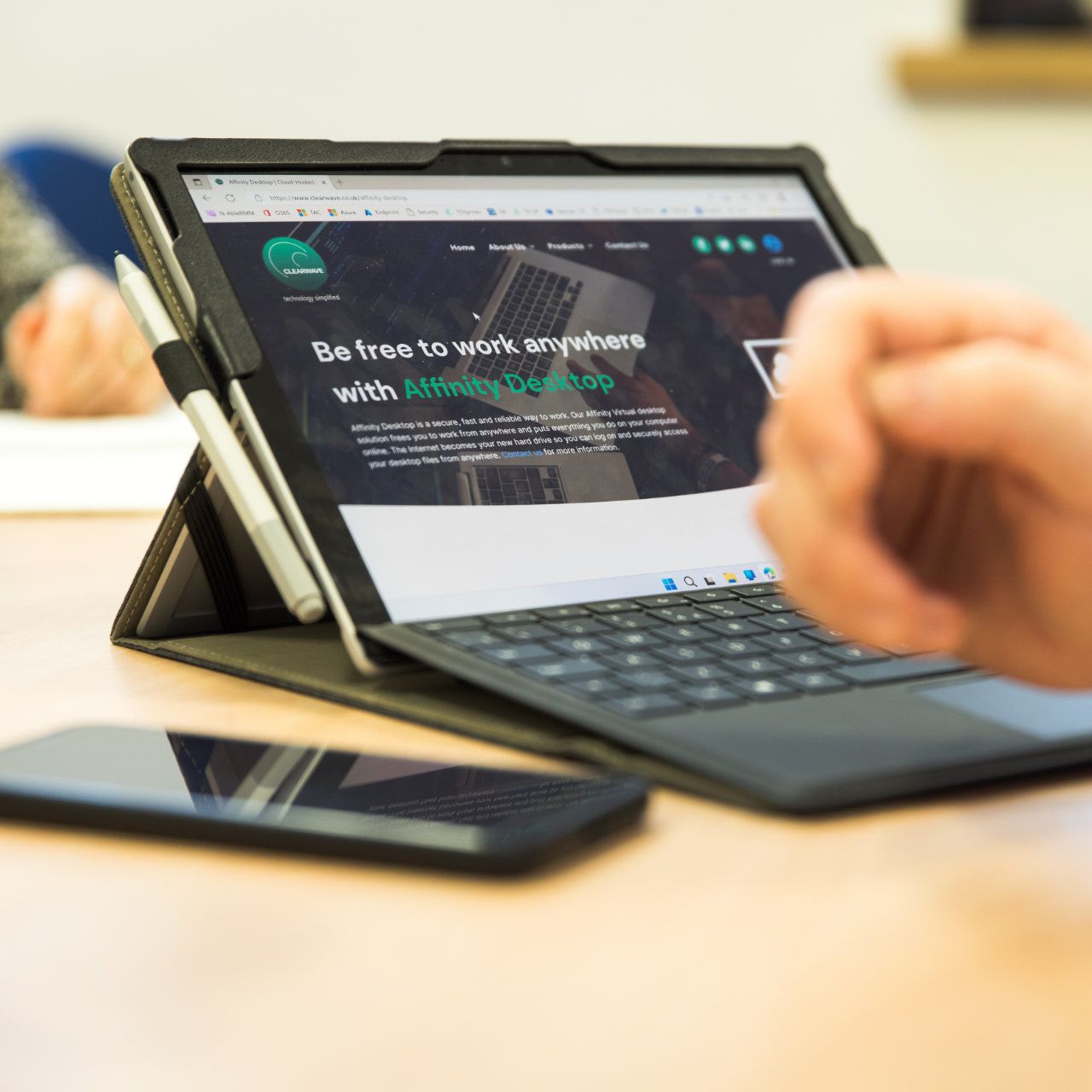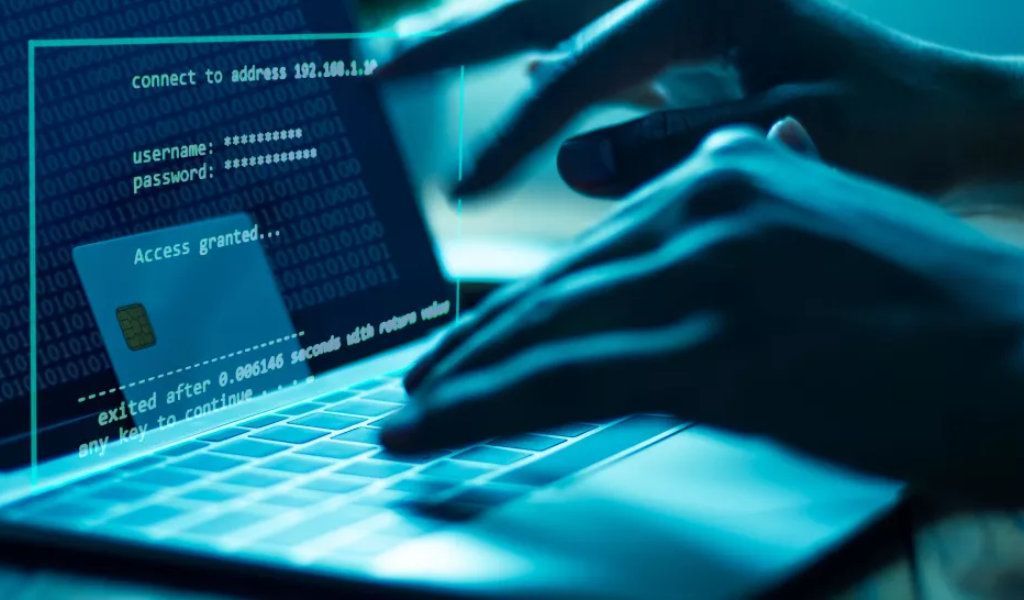Blog

by PH210642
•
23 Dec, 2023
The surge in remote work has brought about intense concerns regarding data security including unsecured home networks and the increased use of personal devices pose significant challenges. You’re living in an era where traditional office spaces are rapidly becoming a thing of the past . The advent of technology and the internet has brought about a paradigm shift in the way you work. This shift, however, has also ushered in new challenges, especially concerning data security. Data is the lifeblood of modern businesses, and its security should be a top priority. The shift to remote work has only increased the need for robust data security measures. With employees accessing confidential information from a variety of locations and devices, the risk of data breaches has never been higher. Therefore, it’s important to understand these risks and implement effective measures to mitigate them. In this article, you’ll explore the top data security issues of remote work and how to manage them effectively. Let’s begin. The Growth of Remote Work While the return-to-office initiative is on the rise, many organizations still allow remote or hybrid work arrangements. In 2023 alone, 28.2% of full-time employees use a hybrid approach, while 12.7% work from home. The flexibility offered by remote work is a big draw for many employees, and businesses are finding that it can also lead to increased productivity and cost savings. However, as the number of remote workers increases, so does the risk of data security issues. Working from home often means using less secure home networks and personal devices, which can be a goldmine for cybercriminals. Furthermore, the lack of direct supervision makes enforcing corporate policies and regulatory requirements harder. Top Remote Work Data Security Issues One of remote work’s most significant data security issues is the risk of data breaches. In a traditional office setting, physical security measures can prevent unauthorized access to sensitive data. However, in a remote work setting, these measures are often absent. Moreover, the increased use of cloud services for collaboration and data storage also presents additional risks. Another major issue is the vulnerability of home networks, which frequently lack the security measures found in corporate environments. Home networks, unlike corporate networks, frequently lack strict firewalls and antivirus software, making them a prime target. Cybercriminals can easily exploit these security flaws, putting personal information and data at risk. As a result, strengthening home network security is critical. Other security issues to keep in mind include: Use of Personal Devices: Remote employees frequently use personal devices for work, which can jeopardize data security. These devices may lack the same level of security as company-supplied equipment, making them more vulnerable to cyber threats and data breaches. Enforcing Corporate Policies and Regulatory Requirements – Enforcing corporate policies and regulatory requirements is another major challenge with remote work. Ensuring compliance with data security policies can be difficult without the physical presence of supervisors and IT staff. Increased Risk of Phishing, Malware, and Social Engineering – Remote workers are also more susceptible to phishing, malware, and social engineering attacks. These attacks often exploit human error and can lead to significant data breaches. Therefore, educating remote workers about these threats and how to avoid them is essential. Inadequate Secure Wi-Fi Networks: Remote workers typically connect to corporate networks through unsecured or public Wi-Fi networks, which poses a significant security risk. Cybercriminals can easily exploit these networks by intercepting data transmission or injecting malware, potentially resulting in data breaches or system compromises. Managing the Data Security Issues of Remote Work Regardless of these challenges, there are ways to effectively manage the data security issues associated with remote work. Implementing a data protection platform and zero-trust security controls are two of the most effective solutions. A data protection platform is an essential component of today’s cybersecurity strategies. It offers a comprehensive solution for safeguarding sensitive data while meticulously monitoring and controlling data access. Its sophisticated mechanisms ensure that only authorized individuals have access to sensitive data, preserving data integrity and confidentiality. This platform is vital for preventing data breaches, improving regulatory compliance, and providing businesses with a secure digital environment. Zero-trust security controls, on the other hand, are founded on a fundamental principle: by default, trust no user or device. Because of this, each access request is thoroughly verified before it can be approved. It is not a case of being overly suspicious, but of being proactive in terms of security. By scrutinizing every request, these controls significantly reduce the likelihood of data breaches. This method is extremely effective in preventing unauthorized access while also maintaining the integrity and confidentiality of sensitive data. Other benefits of using data security tools for remote work include: Improved Visibility and Control: Data security tools provide real-time visibility into all data movement, allowing businesses to monitor and control data access effectively. Improved Compliance: These tools help to meet regulatory requirements by ensuring that data is handled and stored in a compliant manner, lowering the risk of penalties. Data Loss Risk is Reduced: Data protection tools include features like automatic backups and encryption, which reduce the risk of data loss due to accidents or cyber-attacks. Advanced Threat Detection: Some tools use artificial intelligence and machine learning to detect suspicious activity or anomalies, preventing potential breaches. Increased Productivity: In a secure environment, employees can focus on their work without being concerned about potential data breaches, resulting in increased productivity. Improved Remote Work Security: Data security tools include features like secure VPNs and multi-factor authentication, significantly enhancing network security by making it more difficult for unauthorized individuals to access sensitive information. Cost-Effective: Implementing these tools can lead to long-term cost savings by preventing costly data breaches and reducing the time and resources spent on recovery after a breach. Ultimately, remote work presents distinct data security challenges. These challenges, however, can be effectively managed with the right strategies and tools. A solid data protection platform that provides a secure foundation for your digital assets is extremely important. Coupled with zero-trust security controls, you can ensure solid safeguards for your valuable data. These safeguards are essential to maintaining business continuity, especially in this day and age when remote work is becoming more common. With careful planning and implementation, you can weather the storm of data security threats in a remote work scenario. Source : Top Data Security Issues of Remote Work (hackread.com) Contact us to find out more.

by PH210642
•
25 Jul, 2023
What is the definition of a business process. Essentially it is a sequence of events or tasks that must be performed for a business to operate. Business Process Management (BPM) is focused on repetitive and ongoing processes that follow a predictable pattern. Often businesses can have duplicated and wasteful processes requiring unnecessary resources. These require process management because if they are left unorganised and unsystematised, it will lead to mayhem and chaos in the business. BPM is not isolated to focusing on individual tasks or project flow which is generally a one-time or unpredictable flow. BPM is a way of looking at and then controlling the processes that are present in an organisation. In its most simple form BPM is geared for the full effects of a process, where it starts and ends, the key data needed, and where potential bottlenecks and inefficiencies lie. What is a business process management system? BPM tools and systems adopt a systematic approach and methodology to optimise business processes. These systems are used to model, implement, and automate business workflows with the goal of improving performance by minimising errors, inefficiencies, and miscommunication. The idea is to streamline the way things operate to maximise efficiency. BPM Categories BPM systems can be categorised based on the types of processes, programmes, and platforms that a business is performing, essentially these are: a) Integration-Centric BPM This handles processes that are primarily used between existing systems with minimal human involvement. Integration-centric business process management systems have extensive connectors and application interfaces to be able to create quicker processes. b) Human-Centric BPM This is for those processes executed by humans driven by approvals and tasks performed by individuals. These platforms excel at being a user-friendly interface, displaying easy notifications, and quick tracking. c) Document-Centric BPM This is used when a document (e.g. a contract or agreement) is at the heart of the process. They enable routing, formatting, verifying, and getting the document signed as the tasks pass along the workflow. Most business process management systems will be able to incorporate elements of each of these, but each one will usually have one core component. How does business process management work? Business process management framework is a discipline in operations management which uses various methods to discover, model, analyse, measure, improve, optimise, and automate business processes. BPM focuses on improving organisational performance by optimising and managing business processes. The five steps in business process management: Step 1: Design. Identifies who performs and owns existing processes and the design of “to-be” processes, aiming to ensure a correct and efficient new design. Step 2: Model. Represents the process in a workflow showing a visual layout or a theoretical design and introduce a combination of variables or conditions giving a clear idea of the sequence of events, and the flow of data through the process to determine how the process might operate under different circumstances. It may also involve running “what-if analysis.” Step 3: Execute. Test the process with a small group first and then open it up to all users. Step 4: Monitor. Keep an eye on the process as it runs through the workflow. Use the right metrics to identify progress, measure efficiency and locate in the case there are any issues. Step 5: Optimise. Identify any changes that need to be done to workflow to make them more efficient. Consider business process improvement steps. The current trend with BPMs is to perform an analysis of the strengths, weaknesses, opportunities, and threats (called SWOT analysis) which are being used by some key companies.The three most popular types are Virtual Desktop Infrastructure (VDI), Desktop-as-a-Service (DaaS) and Remote Desktop Services (RDS). What is the purpose of BPM? BPM has a few beneficial purposes. It aims to gain control of chaotic and wasteful resourcing and processes. BPM is used for: • digital transformation • process standardisation • tracking individual items and assigning ownership as they move through a workflow. BPM enables continuous change so the improvements can be extended and propagated over time, this is called the “BPM life cycle” where process improvement repeats continuously for the life of the process. This introduces a culture of continual process improvement into the organisation in a structured but easy to use way. Key Goals of BPM It streamlines the way things run within the organisation to maximise efficiency, some of the methodology is different depending on the type of BPM. • For human or document centric BPMs it’s essentially a process to create, map, analyse, and improve or automate business processes to ensure everyday operations run more efficiently to realise bigger organisational goals. Usually driven by business rules, it involves a lot of operational analysis and flow charting, to identify bottlenecks or other issues related to either people or underlying infrastructure. • For system centric BPMs it’s about getting information to where it needs to go when it needs to go there. Having those insights communicated to you in an immediately usable format. This is what reporting and querying software is all about. Success depends in large measure on how well you label the data so it can be identified and included when an appropriate query comes along. A major boost toward accomplishing this goal exists in data warehousing and business intelligence tools that can leverage to successfully interchange shared metadata. It is based on three standards (modelling, repository, interchange). BPM itself is perhaps the “ultra” process improvement technique because it explicitly addresses the complexity of inter-application and cross-repository processes, and incorporates data-driven, as well as content-driven processes – all on an ongoing basis. Clearwave has experience in the research and implementation of BPM and can offer support and training programs for your business. Clearwave has concrete evidence of BPM knowledge and experience; learning new concepts/best practices; and benefiting from its experience and trainers/mentors. Modern businesses that want to thrive, are embracing and harnessing Business Process Management. Contact us to find out more.

by PH210642
•
26 May, 2023
Since the pandemic, Remote and hybrid working adoption has increased tremendously and the idea of going to work or going to the office has changed forever. Traditionally staff would go to the office to connect to their network and IT systems but with the need to work from home adoption of remote working technology has increased. That’s largely thanks to the efficiency of virtual desktops. Designed to enable remote access to your office machine, a virtual desktop allows users to access their computers or applications from anywhere that has an internet connection. In this article, we’ll explain why your company should consider moving to virtual desktops and highlight the benefits of using different types of virtual desktops. Why would you need a Virtual Desktop? Changing from physical to virtual desktops is something lots of businesses are considering because the benefits are hard to ignore. Especially since virtual desktops add an extra layer of security and flexibility to organisations of all sizes. Virtual desktops have also proved to be a great way of reducing costs. Whether that’s the cost of equipment and space for IT infrastructure, the cost of the energy to run it, or the cost of the staff to support and maintain it. So, the argument for ditching the traditional desktop in favour of the hosted version has never been stronger. How do Virtual Desktops work? Essentially this involves moving the computing power from the local computer and making accessible from the cloud. In simple terms, a hosted virtual desktop is a user interface that replicates the functionality of a standard desktop machine. But rather than having a physical machine, a software-based version of the desktop is stored in the cloud. A Virtual Desktop Infrastructure (VDI) provides end-users with remote desktops, with all the benefits that provides. That means the convenience of remote working with a familiar desktop interface, and easy access to applications, software, documents, files, and data. In any location, on any device. As such, multiple people can share an operating system that runs several desktops. So, there's an obvious cost-saving attached to hosted desktops too. Types of Virtual Desktops The three most popular types are Virtual Desktop Infrastructure (VDI), Desktop-as-a-Service (DaaS) and Remote Desktop Services (RDS). VDI : This allows businesses to run desktop operating systems on Virtual Machines using on-site servers. Businesses will need to commit a lot of resources (servers, hardware, software, and administrators) to make sure their VDI runs smoothly. DaaS : Offerings the same functionality as VDI, but in the cloud. DaaS shifts the burden of providing desktop virtualization to service providers, like Clearwave, which lessens the IT burden of providing virtual desktops through cost-effective solutions. RDS : Remote Desktop Services are often used when a limited number of applications need to be virtualized, rather than a full desktop. Microsoft Remote Desktop Services allows users to remotely access applications that are streamed to local devices which run their own OS. Since it’s just the apps being virtualized, RDS systems can offer a higher density of users per Virtual Machine. Benefits of Virtual Desktops 1. Work where you want DaaS – also known as a hosted desktop or virtual desktop or even cloud desktop – allows users to access the apps, files, and documents they use for their work, from any location with an internet connection. So, users can work just like they always do, from wherever and whenever they want. 2. Work on any device DaaS is a real asset for remote working. It runs on any device and any OS. On PC or laptop, iPad, or tablet. So, employees can not only work where and when they want but also how they want. On a PC in their home office, on a laptop on their knees or on a smartphone on the train. It doesn’t matter what device they work on; they’ll find their desktop is the same as always. 3. Work more securely Multi-factor authentication provides an additional layer of security. It ensures DaaS provides greater protection against cyberattacks than a traditional desktop which relies solely on a password for access. DaaS users must employ several ways of verifying their identity – such as a username, a password, and a PIN texted to a phone – before they can gain access to a network, an app, or a file. 4. Keep everything up to date Applying security patches and software upgrades across an extensive I.T. estate can be time-consuming. DaaS makes it quicker and easier. Any patch, upgrade or other change carried out just once on the dedicated hosted desktop server will automatically go live for all users across all endpoints in the organisation’s infrastructure. 5. Enjoy more resilience and reliability Only the very largest organisations can afford to invest in the most sophisticated hardware to meet the ongoing cost of keeping it up to date. However, by using DaaS, even the smallest business can benefit from cutting-edge, fault-tolerant, highly reliable infrastructure, in state-of-the-art data centres. 6. Lower your TCO If you don’t own your server infrastructure, the Total Cost of Ownership (TCO) is going to be lower. With the additional costs of the data centre space, the cooling, the licences, the power, and the people to run it, there are significant savings to be made from not bearing the whole cost. 7. Keep things simple The one-off installation of patches and updates is just one way that DaaS simplifies desktop management. Because hosting allows virtually all management tasks to be centralised, IT support staff can spend less time on management and more time on supporting critical business processes or developing new projects. 8. Boost uptime, reduce downtime For regular, day-to-day operations, DaaS reduces downtime. That’s because most maintenance and software installation is carried out in the data centre rather than on the physical machine on the desk. Even if a ransomware attack or a fire puts multiple desktops out of action, a hosted desktop environment makes it quicker and easier to get back to normal operations. So, workers can keep on working even if the worst happens 9. Reduce time to market Whether it’s rolling out a new service or opening a new office, DaaS makes it faster. It eliminates the need to build, install, configure, and deploy multiple new desktops. Just do it once and download it as many times as required. 10. Be greener DaaS allows one server and one set of back-office hardware to service numerous desktops across multiple organisations. That reduces the carbon footprint of every one of the businesses being served. Clearwave's solution for Virtual Desktop Clearwave Affinity Desktop provide your users with a virtual office hosted and managed in Azure. Our remote access solution provides a consistent, modern desktop experience regardless of the device they are using, which is not only fast and seamless but is also inherently safe and secure. Contact us to find out more.

by PH210642
•
30 Apr, 2023
Computer hardware is a crucial component of any computer system. It includes all the physical components that make up a computer, such as the motherboard, processor, hard drive, RAM, and other peripherals. The importance of replacing computer hardware cannot be overstated since it plays a significant role in the overall performance and lifespan of a computer. One of the primary reasons why replacing computer hardware is essential is to improve its performance. As technology continues to advance rapidly, older hardware may not be able to keep up with newer software and applications. This can result in slow or unstable performance that can significantly impact productivity and efficiency. By upgrading or replacing outdated hardware components, users can experience faster processing speeds and smoother system operation. Another reason why it's vital to replace computer hardware is to ensure compatibility with new software and applications. As new versions of software are released, they often require more powerful hardware specifications than previous versions. If users fail to update their hardware accordingly, they may not be able to run the latest software properly or at all. This can lead to compatibility issues that make it challenging for users to complete tasks effectively. Moreover, replacing computer hardware allows for better security measures against cyber threats. Old systems may not have the latest security features that protect against malware attacks or hacking attempts. Outdated systems are more vulnerable since hackers often find vulnerabilities in older systems that have not been updated with security patches or anti-virus software updates. In addition to improved performance and better security measures, replacing computer hardware also extends its lifespan. Over time, computers experience wear and tear due to constant use which results in wear on internal components such as hard drives or RAM sticks leading them eventually failing altogether. Replacing damaged parts promptly prolongs the life span of your device while preventing potential data loss from broken parts that could cause further damage if left unchecked for too long. Furthermore, by upgrading your system's components regularly (such as adding more memory), you can keep pace with technological advancements and avoid the need for a complete system overhaul in the future, which can be costly and time-consuming. Replacing computer hardware also reduces downtime caused by hardware failures. When a computer's hardware fails, it can take hours or even days to repair or replace the damaged components. This results in lost productivity and revenue for businesses that rely on computers for their operations. By replacing faulty parts promptly, users can minimise downtime and ensure that their systems are running smoothly. Apart from these practical reasons, replacing computer hardware also has environmental benefits. Old systems often consume more power than newer ones, which increases energy costs and harms the environment. By upgrading to more energy-efficient components, users can reduce their carbon footprint while saving money on their electricity bills. In conclusion, the importance of replacing computer hardware cannot be overstated since it plays a significant role in the overall performance and lifespan of a computer. Upgrading outdated components ensures compatibility with new software and applications while improving security measures against cyber threats. Additionally, upgrading to more energy-efficient components can help reduce energy costs while minimizing downtime due to hardware failures. Therefore, it is essential to invest in regular upgrades or replacements of your system's components to keep pace with technological advancements and enjoy optimal performance from your device.Moreover, replacing computer hardware can also improve the user experience. As technology advances, new hardware components are designed to provide a better and more convenient user experience. For example, newer processors offer faster speeds and more cores, which can handle multiple tasks simultaneously without any lag or slowdown. Additionally, new graphics cards provide better visual quality and performance for gaming or video editing applications. By upgrading to newer hardware components, users can enjoy a more efficient and enjoyable computing experience. Another reason why replacing computer hardware is essential is to avoid obsolescence. Technology evolves at a rapid pace, and what was considered cutting-edge just a few years ago may now be obsolete. Using outdated hardware components means that your system may not be able to keep up with the latest technology trends, leading to decreased productivity and efficiency. Replacing computer hardware allows users to customise their systems according to their specific needs. For instance, if you are a gamer who wants to play the latest games with high graphic settings, you may need to upgrade your graphics card or add more RAM for optimal performance. Similarly, if you are a designer who works with large files or complex software programs like Adobe Photoshop or AutoCAD, you may require additional storage space or faster processing speeds. In addition to these benefits of replacing computer hardware mentioned above, upgrading your system's components also adds value in terms of resellability. If you plan on selling your computer in the future, having updated hardware will make it more attractive to potential buyers since they will be getting a device that is up-to-date and meets current standards. Lastly, replacing computer hardware ensures that users stay ahead of potential technological disruptions that could impact their ability to use their devices effectively. For example, older computers may not have the necessary USB ports for new peripherals like VR headsets or external SSDs (Solid State Drives) that use USB-C connections exclusively - this could limit your ability as an individual using such devices. In conclusion, the importance of replacing computer hardware cannot be overstated since it plays a crucial role in the overall performance, lifespan, and user experience of a computer. By upgrading or replacing outdated components regularly, users can enjoy faster processing speeds, better compatibility with new software and applications, improved security measures against cyber threats, reduced downtime due to hardware failures, and reduced energy consumption. It also helps users stay ahead of potential technological disruptions and adds value in terms of resellability. Therefore, it is vital to invest in regular upgrades or replacements of your system's components to keep pace with technological advancements and enjoy optimal performance from your device.

by PH210642
•
15 Mar, 2023
You may think this article is going to discuss how users are one of the biggest challenges to cybersecurity. After all, employees are known to click on unverified links, download malicious files and neglect to change their passwords. And then there are those who use their personal devices for business purposes and put the network at risk. Yes, all those people can cause issues for cybersecurity. But the people who are usually blamed for cybersecurity issues wouldn’t have such an impact if organizational leadership — not only the CISO or IT department — prioritised cybersecurity. If you are a company leader, this article is for you. You know cybersecurity is very important. Every leader does. But do you keep it at the forefront of every decision? And do you constantly share that message with your employees? Even the most cyber-aware leader likely has room for improvement. There is a difference between saying cybersecurity is important and backing up this belief with your actions and decisions. Your employees and other leaders value your opinion and listen to you. If you don’t prioritize the security of your data, apps and infrastructure, your employees won’t either. Even your small actions and decisions make an impact on the entire company’s risk of a cybersecurity attack. It’s not an easy shift to make, and it’s hard to admit that you are part of the problem. But you aren’t alone — almost every company leader can improve their advocacy and prioritization of cybersecurity in some way. Here are three keys to solving the people problem in cybersecurity. Understand the Business Value of Cybersecurity Real change in cybersecurity only happens when an organization realizes its business success depends on its cybersecurity practices. Having the most amazing product only takes you so far, especially if customers take their business elsewhere after their personal data is stolen. The best salespeople in the world can’t overcome customer distrust after a highly publicized breach. And customer loyalty only goes so far when your business is continually disrupted due to cyberattacks. In today’s climate, breaches are a “when not if” proposition. The IBM 2022 Cost of a Data Breach report found that 83% of companies had more than one data breach, with the average cost of a breach at $4.35 million. Additionally, 60% of organizations raised prices for customers after the breach due to increased costs. The study also found that the cost of breaches was much higher than average, at $5.57 million for organizations with high levels of compliance failures. When your organization suffers a breach, it’s not simply an IT problem but a major company-wide issue. The first step to fully protecting your organization is truly understanding the business impact of a breach or cybersecurity attack, as well as the value of a proactive cybersecurity initiative. With a proactive mindset, you can make the decisions necessary to fully protect your organization. Create a Culture of Cybersecurity The next step is to impart the mindset of cybersecurity to your employees. Leaders create the organisation’s culture. By proactively creating a culture of cybersecurity along with your company’s core culture, your organization can significantly reduce its cybersecurity risk. Instead of employees viewing cybersecurity as the IT department’s job, each employee and team must feel personally responsible for cybersecurity. Employees need to understand that their actions — even something as simple as not updating software patches on their phones — can cause a major cybersecurity attack that costs the company millions of dollars. Teams must place cybersecurity as a top priority when designing new processes, products and services. The cybersecurity team and IT department are available to provide expertise, but the employees on the front lines are the ones in the position to make the most difference. Creating and maintaining a cybersecurity culture doesn’t mean talking about it once a year at mandatory cybersecurity training. Yes, employees need training, but it should be more frequent and interspersed throughout the year. By continually talking about cybersecurity, such as giving reminders of good cybersecurity hygiene and updates on current threats, leaders can help employees keep security issues at the top of their minds. Allocate the Resources Mindset and culture set the stage and the foundation for a successful cybersecurity program. Without both of those in place, you cannot and will not make the business decisions needed to create an effective cybersecurity framework. But your organisation can only protect its apps, data and infrastructure when the right resources — both human and technology — are in place. Leaders must fully buy into the importance of cybersecurity; only then will they make the business decisions necessary to protect the organisation. Having the right technology on board makes a significant difference in the impact of any breach. With a zero trust approach, organisations reduce both their risk of a breach and the impact when one occurs. Organisations with a mature zero trust deployment versus early adoption of zero trust saved an average of $1.51 million after a breach. Additionally, organizations with Extended Detection and Response (XDR) technology identified and contained breaches an average of 29 days earlier than those without. When it comes to cybersecurity, it’s easy to focus on technology and strategies. But the biggest issue with cybersecurity really does come down to people. And the only way to make a difference in the actions and attitudes of those on the front lines is for leaders like yourself to approach each day with cybersecurity as a priority. The future of your business depends on you as a company leader taking the message of cybersecurity to heart. Your mindset and attitude on cybersecurity are on stage for every person in your company to see. By prioritizing cybersecurity, you have the ability to make a positive impact on your entire company. Source - How to Solve the People Problem in Cybersecurity (securityintelligence.com)

12 Mar, 2023
Why Small Businesses Need a Technology Strategy In today's fast-paced business environment, technology has become a critical component for any organisation's success, regardless of its size. However, small businesses often overlook the importance of having a technology strategy in place, considering it as an unnecessary expense. In this blog post, we will discuss why small businesses need a technology strategy and how it can help them to grow and succeed.

28 Feb, 2023
API growth is presenting opportunity for cyber criminals APIs are big business with the adoption of application programming interfaces (APIs) estimated to grow dramatically this year. According to Forrester Research, commissioned by Imperva, half (49%) of organizations have between 25 and 250 internally published APIs, and 60% have the same number of public APIs, with these numbers set to increase this year. APIs are regarded as essential to digitalization, enabling applications, containers, and microservices to exchange data and information quickly so customers experience more convenience on their digital devices. In the same Imperva report, more than three-quarters (78%) of business leaders say APIs are important to keep the business competitive, particularly for connecting with customers (88%) and for improving data ownership and management (83%). This is all great stuff for business productivity and performance, but the flip side is that with this growth in APIs comes greater opportunities for cyber criminals. In the past 12 months 95% of companies have had an API security incident based on figures from Salt Security, with API attack traffic growing by 681%. API vulnerabilities is costing businesses up to $75bn annually. How threat actors are utilizing APIs Last year alone we witnessed some high-profile breaches where hackers utilized API vulnerabilities as an effective attack method. The Optus breach saw 2.1 million users’ personal information stolen, Twitter had 5.4 million users’ data exfiltrated, and Lego’s BrickLink API vulnerability, found by Salt Security, demonstrated the commonality of vulnerabilities inherent in Open API’s. As we become ever more connected through digital mediums, APIs are becoming part of our daily communications. Once in, APIs act as a route for hackers to obtain business critical information or penetrate laterally through the organizational network. Attackers gain access to an API relatively easily through several techniques, some more sophisticated than others. Injection attacks, DDoS hacks, authentication hijacking or man in the middle (MITM) attacks are the most common, however, failing to have proper cyber security governance is also a huge contributing factor to the problem. For at least the last five years shadow IT has been a real problem, not to buck this trend we are finding shadow API is becoming as big an issue. The drivers behind this are from the lack of internal communication between developers, network and security, as well as, having insufficient visibility into the corporate sphere. Individuals and departments need to conduct their job in the most efficient way possible but publishing APIs without security reviews or controls together with too much internal bureaucracy and governance leads to employees regularly obtaining unsanctioned third-party software or applications, leaving doors unlocked for cyber criminals to crawl through. How to defend against API cyber attacks To help keep these API doors firmly shut, there are steps businesses can take. API infrastructure First and foremost, have a deep understanding of your API infrastructure. Security hygiene is often overlooked but should be a task which is regularly carried out to ensure no missed configurations or patches may have been missed. Patch management tools and vulnerability scanners can help overloaded security and help network teams automate some of these tasks. Applying a role-based access control policy is a straightforward way to limit an individual or group access to internal resources. You can do this through Zero Trust Network Access (ZTNA), where security teams can quickly apply controls that limit employees to certain internal assets, restricting them only to the data they need to do their job effectively. Moving to a zero trust architecture limits movement and access of data. There are many principles which make up zero trust, however, in its simplistic form the philosophy is; trust no device or connection on your network and limit the movement between devices and applications by implementing segmentation and authentication throughout every interaction. It works much like an onion by putting additional protections around and in each segment. Employee access can be further limited depending on where the individual is geographically, the device they use, their internal permissions and the data they are trying to acquire. Visibility Secondly, visibility is a given - you can’t defend against what you can’t see, and you can’t take action on vulnerabilities unless you understand what is connected and communicating in your network. Network Detection and Response (NDR) platforms provide great insight into assets on the network and the communication patterns between systems and users. Add in machine learning and you can quickly identify any anomalies or nefarious behavior to take quick, appropriate action. Collaboration of teams Ensuring that your SecOps team partners with your DevOps team is key to the integration of automation security testing tools and the benefits of machine learning to differentiate normal API behavior from malicious traffic. And of course, there are specific tools which can be deployed to monitor and control code being developed by DevOps teams before it is pushed out into the production environment. These systems are controlled and monitored by security but it’s important to give flexibility to DevOps by providing predefined secure code templates or scanning the code prior to its release. These systems can also scan the dependencies connecting to the API to ensure secure connections between containers, operating systems, and applications before it allows the flow of traffic. Cybersecurity is ever evolving and so are the threats we face with APIs now high on the list of attack methods. It is important for security teams to understand the company infrastructure in detail and the associated threats in their industry to guide them in making the best-informed decisions based on their technology and knowledge gaps. The only way we can reduce our risk is to apply a layered approach. Source - Why API cyber attacks are one of the biggest threats this year

28 Feb, 2023
Preventing human error 85% of cybersecurity incidents contain an element of human error and, with the pandemic shifting the workplace outside the confines of the traditional office space, organizations across the world now lack the visibility over employee activity that they had grown accustomed to. At best this has a knock-on effect on productivity. At worst, this makes organizations even more vulnerable to cyber criminals. Increased surface area for cyber criminals to attack Remote working means there is suddenly a huge increase in the surface area available to attack; employees are now accessing sensitive data from multiple locations across multiple devices and the traditional perimeter has now become blurred. A single stolen or lost laptop, which is not encrypted or password protected, can give an unauthorized password access to the entire set of data in all apps if a user remains logged in to cloud apps. This becomes even more of a concern at scale; even within SMBs that may only have 100 employees, the number of potential access points can exceed 5000 if there are 50 different cloud apps being used. Siege mentality no longer works in deflecting external threats and there are multiple access points that cyber criminals can target. It is impossible for IT policies to be enforced on third-party WiFi networks, and the traditional method of using an IP address as a form of verification becomes obsolete in a workplace that is transient in nature. Outbound (and inbound) employees Alongside dealing with the current workforce, organizations are now faced with much more complicated considerations when it comes to inbound and outbound employees too. During the pandemic, more than one in four employees in the UK were furloughed, with 8% of these not returning to their employer once furlough ended. With the majority of these employees still retaining access to at least one sensitive business system after they have left their role, they pose a real threat when it comes to data breaches. Similar considerations need to be made for inbound employees; many often bring with them legacy behavior and a lack of digital hygiene. One example of this is a reliance on personal apps that may not have the necessary level of security to comply with IT policies; a recent study by Verizon found that data breaches through such applications have doubled in frequency since 2019. The cost of cyber-attacks One of the major concerns for any organizations are the costs associated with cyber-attacks. With a DDoS (distributed denial-of-service) attack, systems could be offline for a few hours, resulting in loss of revenues and a disrupted workforce. If a cyber-attack infects an organization's systems with ransomware, then this could cripple them for days or even weeks. Along with potential ransom payments, the cost of recovery could result in losses of millions of pounds. A Ponemon Institute study found that organizations spend almost £3 million per incident; a not-insignificant number. There is also the issue of data; if potentially sensitive and personal information is stolen in a data breach, it can not only tarnish the reputation of a business, but also affect customer retention or lead to hefty fines from the authorities. Zero Trust as a solution With the indiscriminate nature of cyber-attacks, the most obvious solution for an organization is to implement 'Never trust, Always verify' security measures across it’s networks. This is particularly important when we consider just how many areas of a business can be targeted; by working under the assumption that every connection – whether “secure” or unsecure – could be a threat, this approach to security is proactive rather than reactive, preventing a potential cyber-attack before it can even take place. Managing these IT policies under a single-system platform, such as that offered by Zelt, helps to unify operations across both IT and HR departments, ensuring that employees are only able to access data that they need at that given time for their given role in the company. For those leaving a company, permissions can quickly be revoked, protecting any potential access to sensitive data. This can be time-intensive, and so it also helps to automate the system in order to manage resources. Of course, for Zero Trust to effectively combat the threat of cyber-attacks, every single employee of a company needs to be behaving in the same way. Again, by automatically implementing a policy through a single-system platform, there is less room for error and every employee must, by default, operate under the same rules. This can also remove any potential friction between the employer and the employee when monitoring and implementing various permissions; the Zero Trust process becomes a policy rather than any form of judgement. Source - The threat to cyber security in 2022 and how zero trust can combat this

07 Feb, 2023
In our online age, digitisation and business success have become intrinsically linked, and customers have come to expect a high degree of digital literacy from the companies they interact with. Digital transformation is a win-win for all parties, with customers enjoying new, innovative ways to access products and services, and businesses equipped with technology that helps streamline workflows for more efficient operations, however it is not without its risks. According to the UK Cyber Breaches Survey 2022, 39% of businesses surveyed identified a cyber attack incident in the previous year. Of those attacked, 1 in 5 reported negative effects directly resulting from an attack, and for those reporting material losses the average cost of an attack was found to be £4200. Needless to say, when it comes to data security the stakes are high, with the effects of breaches ranging from ICO-issued monetary penalties to long-term reputational damage which in the worst cases can threaten business viability. So how can you ensure compliance and consequently safeguard your business’s reputation? As you’ll be well aware if your business handles personal information, the UK’s General data protection regulation (GDPR) contains seven principles with the aim of protecting the interests of data subjects. One of these, known as the ‘integrity and confidentiality’ principle is particularly relevant in relation to your business’s IT, as it sets out your responsibilities in terms of safeguarding the personal data your hold against external threats. It states that personal data should be: ‘processed in a manner that ensures appropriate security of the personal data, including protection against unauthorised or unlawful processing and against accidental loss, destruction or damage, using appropriate technical or organisational measures’ So what ‘technical or organisational measures’ does the legislation specify? Well, none specifically. The legislation allows data controllers and processors to use their judgement to apply measures which are proportionate in cost and sophistication to the level of risk involved. Article 32(1) states: ‘Taking into account the state of the art, the costs of implementation and the nature, scope, context and purposes of processing as well as the risk of varying likelihood and severity for the rights and freedoms of natural persons, the controller and the processor shall implement appropriate technical and organisational measures to ensure a level of security appropriate to the risk’ In respect of ‘technical measures,’ which are particularly pertinent to your business’s IT, the legislation only refers to two specific examples: encryption and pseudonymisation. While useful, these should be used alongside a much greater package of protections that takes a holistic view of data security. So what data security measures should you consider to stay complaint and defend your business’s reputation? Here are 5 key ways to ensure compliance that all businesses should explore: Create information security policy documents With around 80% of data breaches traceable to end user action, employees can represent a huge risk to corporate data, especially when they don’t fully understand their data protection responsibilities. Information security policies are a great way to formalise cyber security guidance and give employees clearly defined boundaries when it comes to their security obligations. When creating policy documents, consider activities, processes and devices that subject data to elevated risk, and create a policy document for each. Here are a few of the most common information security policy subjects you may want to consider: · Remote Access. Without the appropriate measures in place, accessing data remotely can present increased security challenges. Consider setting out clear guidance on the use of public WiFi and set boundaries on the security standards of devices being used to access your organisation’s network. · Passwords. Compromised user accounts are among the most common causes of data breaches, with many attributable to basic, easily- guessed passwords. Unless your business uses a centralized identity management system, then it’s essential to have a password policy that outlines best practice. Consider requiring passwords to be a combination of letters, numbers and special characters, urge users to create unique passwords for each account and stress that passwords should never be written down. · Removable storage media. Although less common in the age of cloud storage, many businesses continue to use removable devices such as USB drives to store and transfer data. With many more secure alternatives available, consider an information security policy that prohibits the use of removable media, or restrict their use to a small number of permitted devices which are regularly screened by your IT team. · Clean Desk Policy. A clean desk policy typically requires employees to remove and securely store documents, small devices and other items when they aren’t at their workstation. It’s important to remember that the GDPR relates to personal data stored on any format, so implementing a clean desk policy could help you meet your obligations. Establish a business continuity plan A business continuity plan is a strategy for recovering from and minimising the damage caused by a disruptive event, such as a cyber-attack, natural disaster, office fire or theft. When disaster strikes, your customers will judge your response, so it’s vital to have a comprehensive plan in place that protects the data security interests of your customers and allows for swift service resumption. A business continuity plan also has a role to play in ensuring compliance. For example, in the event of a cyber-attack, your continuity plan should outline measures for neutralising the threat and limiting the possibility of the breach spreading laterally across your network, thus limiting the amount of data that is exposed to the attacker. It should also feature extensive details on the use of data backup systems, essential to ensure that personal data can be recovered following the likes of a ransomware attack. The plan should include a list of all the elements in its scope (hardware, software and other systems), the failover systems and backup services that will aid in the recovery process, as well as the employees tasked with coordinating each aspect of the plan. Implement secure remote access With around 22% of UK workers working remotely at least one day per week, providing secure remote access to company data remains an important consideration for many businesses, and is a vital aspect of ensuring GDPR compliance. ‘Secure remote access’ defines technical solutions that allow employees to access either a corporate network or files and resources in a secure, managed way. Although not stipulated in UK GDPR, the Information Commissioner’s Office (ICO) recommends that organisations consider applying access controls to ensure data is held securely, which is exactly what secure remote access solutions seek to achieve. Various security measures can be defined as secure remote access solutions, with some of the most notable including: · Virtual Private Networks (VPNs). VPNs create an authenticated and encrypted connection to an office network over the internet, allowing corporate resources to be accessed remotely. Affordable and secure, VPNs are a great way to grant access to network resources without compromising data security. · Mobile Device Management (MDM). MDM platforms allow IT security personnel to govern and manage remote devices, ensuring that the most recent updates are applied, authentication measures are enforced and that the devices are configured for maximum security. · Microsoft 365. Featuring generous cloud storage allowances via subscription pricing, Microsoft 365 has become a popular way for businesses to enable remote working. Containing numerous compliance features such document sensitivity labels and the ability to apply file access, use and download restrictions, Microsoft 365 makes data governance easy. Use technical measures to counter online threats ‘Technical measures’ defines infrastructure level-controls designed to protect data from loss, corruption, malicious intrusion or compromise. The technical controls you use should be proportionate to the sensitivity of the data you process and the likely harm that would result from that data falling into the wrong hands. Some measures, such as those prescribed by the government’s Cyber Essentials scheme, should be implemented by all businesses handling personal data in order to mitigate against the majority of online security threats. Known as the ‘5 Controls,’ these measures include: · Firewalls. Configurable at device level or at the edge of a network, firewalls moderate web traffic in a way that reduces the likelihood of users encountering malware hosted on malicious sites. · Secure Configuration. Auditing devices to ensure the most secure settings are activated is vital to maintaining the integrity of your security posture. Consider removing unnecessary applications to limit the ‘attack surface’ available to hackers, and change default passwords in favour of something more secure. · Apply access controls. Extend user privileges and network access on a strictly as-necessary basis to limit the risk posed by account takeovers. ‘Admin’ accounts are prime targets for hackers, so try to reduce accounts with such privileges to as few as possible. · Use anti-malware measures. Malware such as ransomware, keyloggers, worms and viruses present an omnipresent danger to corporate data, with the ability to corrupt files, steal login credentials and inflict network-wide damage. Anti-malware software designed to detect and eliminate malicious code should be used across all endpoint devices and email filters with in-built anti-malware capabilities should be used to screen inbound mail. · Maintain and secure software. As software manufacturers become aware of vulnerabilities in their programmes they release ‘patches’ or ‘security updates’ designed to rectify them. These should be applied diligently and swiftly to prevent criminals exploiting these newly discovered weaknesses, and unsupported programmes should cease to be used. Develop a strong cyber security culture As we’ve mentioned, the majority of data breaches can be attributed to user error, so engendering a culture of cyber security awareness can be a great way to reduce your overall risk profile. Cyber Security awareness training can be a great way to build knowledge and give your employees the confidence to spot and act against suspicious activity. Often delivered via online learning portals, third party training providers offer a range of programmes with test exercises and learning modules designed to deliver incremental learning that doesn’t impact on the working day. You could also consider sharing cyber security news with your employees on a regular basis. This will help familiarise them with the online threats that exist and keep them mindful of the harm that data theft can cause both at a business and individual level. Conclusion Data security is never a single-fix action, with risks and dangers that evolve over time and change according to the activities and processes a business undertakes. By considering the guidance above however, you’ll demonstrate your ability to manage and mitigate data security risks, inspiring confidence in your customers and maintaining ongoing compliance with your data security obligations. Clearwave – Technology Simplified In today’s data-rich workplace, achieving compliance objectives while juggling the many moving parts of a modern business can be a tricky challenge. It’s made even more difficult when your business’s technology evolves over time, resulting in dispersed data stores and poor data visibility that makes proper information governance near-impossible. However, with data breaches often resulting in crippling financial penalties and severe reputational harm, data security is something you simply cannot leave to chance. Clearwave’s tried and tested technology assessment process will bring your business’s technology back in line with your compliance goals. We can survey your infrastructure to root out the systems and data that escape your control and identify opportunities for security enhancements to keep the bad actors away from your sensitive information.
Useful Links
Stay Informed
You need a helping hand with your project?
Thank you for contacting us. We will get back to you as soon as possible
Uh oh, there was an error sending your message. Please try again later.
© 2024
All Rights Reserved | Clearwave Enterprise Solutions

